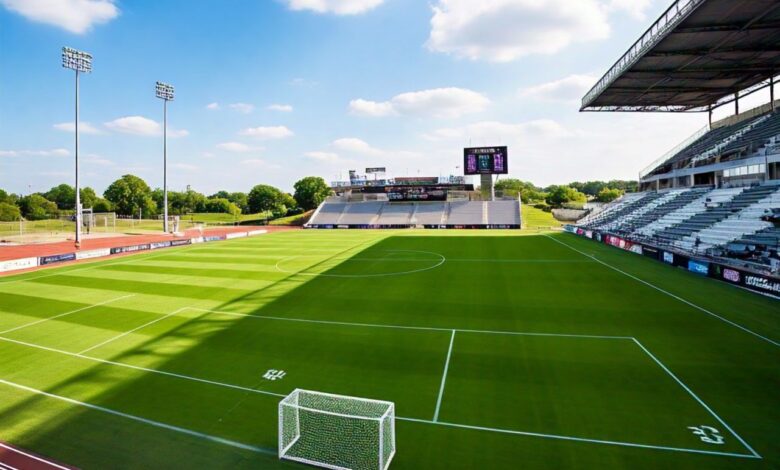Understanding Soccer Field Dimensions: A Simple Guide for Beginners

The soccer field dimensions are important because they define how the game is played. Every soccer field is made to certain measurements to make sure all matches are fair. Knowing the soccer field dimensions helps players, coaches, and fans understand the game better. From the length of the field to the size of the goals, these measurements play a big role in shaping the game.
In this blog, we will break down the most common soccer field dimensions you need to know. Whether you are just starting out or looking to understand the technical side of the game, this guide will help you understand everything about the field. Let’s explore what makes a soccer field unique and how its dimensions influence the play!
What Are the Standard Soccer Field Dimensions?
The soccer field dimensions are essential for any official match. A standard soccer field is rectangular, with the length ranging between 100 and 130 yards. The width of the field is between 50 and 100 yards. These measurements ensure that every professional match is played under consistent conditions.
The soccer field dimensions also affect how teams plan their game. A wider field gives more space for players to move around, while a longer field creates more room for running. These dimensions are set by the governing bodies like FIFA, making sure that every match is fair and enjoyable.
How Length and Width Affect Soccer Game Play
The length and width of the soccer field influence how players approach the game. A longer field gives more room for attacking and defending strategies. Teams can use the extra space to create more attacking opportunities or defend against the opponent.
The width of the field also impacts play. A wider field allows players to spread out more and pass the ball around easily. It helps teams control the game by creating better passing lanes and spaces for wingers to make runs. Understanding how the dimensions affect play helps players and coaches plan better strategies.
Understanding the Goal Area in Soccer Field Dimensions
The goal area is an important part of soccer field dimensions. This is the smaller rectangle in front of each goal. The goal area is 6 yards deep and 20 yards wide. It marks the region where goal kicks and certain free kicks are taken by the defending team.
The goal area is essential for the goalkeeper. It gives them space to move and handle the ball. This area is crucial for maintaining order during restarts and free kicks. Understanding the goal area helps players know where they can and cannot be during certain situations in the game.
The Importance of Corner Arcs and Touchlines in Soccer Fields
The corner arcs and touchlines are key to understanding soccer field dimensions. The touchlines run along the sides of the field and mark the boundary for the ball to remain in play. If the ball crosses this line completely, it is considered out of bounds.
The corner arcs are found at each corner of the field. These small arcs mark the area where the ball must be placed for corner kicks. Players must make sure the ball is inside this corner arc before kicking it into play. These markings help keep the game organized and fair.
Conclusion
In conclusion, understanding soccer field dimensions is important for both players and fans. Whether you’re watching a game or playing, knowing the size of the field can help you better understand how the game is played. Soccer field dimensions affect the speed, strategy, and flow of the game. Knowing the standard measurements ensures the game is fair and fun for everyone involved.
As we’ve seen, there are different sections of the field, such as the goal area, penalty area, and corner arcs, that all have a specific purpose. From the length and width of the field to the markings and zones, every part of the soccer field plays a role in the game. Knowing these details can make you appreciate the sport even more.
FAQs
Q: What is the standard size of a soccer field?
A: The standard size of a soccer field is between 100 and 130 yards long and 50 to 100 yards wide.
Q: How big is the goal area in soccer?
A: The goal area is 6 yards deep and 20 yards wide, marking where goal kicks and certain free kicks happen.
Q: What happens if the ball goes over the touchline?
A: If the ball crosses the touchline completely, it’s out of bounds and the game is restarted with a throw-in.
Q: Can soccer field dimensions vary?
A: Yes, soccer field dimensions can vary depending on the level of play and location, especially for youth and recreational fields.
Q: Why is the penalty area important?
A: The penalty area is where the goalkeeper can handle the ball and where fouls lead to penalty kicks.





